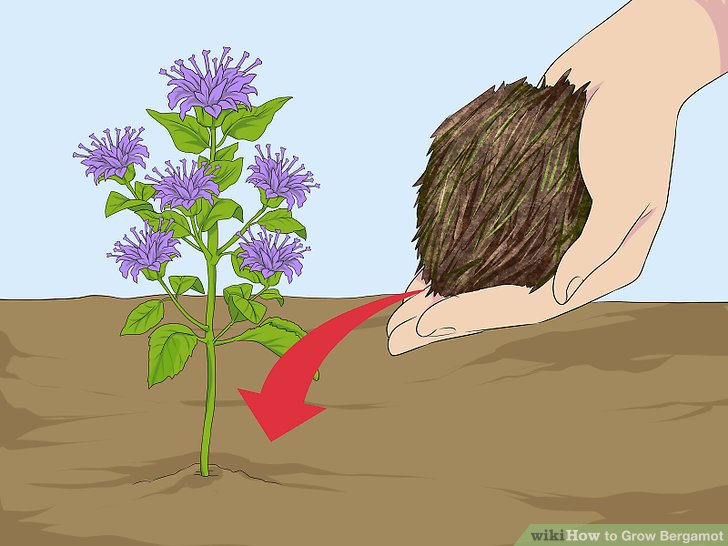Bergamot is a fragrant herb in the mint family that is used to make teas, perfumes, and aromatherapy oils. Both the bergamot orange and the bergamot herb (Monarda species) produce the distinct citrusy oil, though the two plants are unrelated. If you love Earl Grey tea or citrusy scents, you may be interested in growing your own bergamot plants at home. Here is a complete guide to successfully growing bergamot herbs in your garden.
Choosing a Bergamot Variety
There are over a dozen different Monarda species that are commonly called bergamot or bee balm. Some popular varieties include:
-
Wild bergamot (Monarda fistulosa) – Native to North America with lavender blooms The most commonly used for tea and essential oil.
-
Lemon bergamot (Monarda citriodora) – Has a strong lemon scent.
-
Scarlet bergamot (Monarda didyma) – Features bright red blooms
-
Purple bergamot (Monarda media) – Grows 24-36 inches tall with purple flowers.
For the best fragrance and flavor, wild bergamot and lemon bergamot are top choices. Visit your local nursery or purchase seeds of your chosen variety online.
Growing Conditions for Bergamot
- Sun: Full sun to partial shade
- Soil: Rich, well-draining soil
- Zone: 3-10
- pH: 5.0-7.5
Bergamot thrives in sunny spots with fertile soil. Good drainage is important to prevent root rot. Once established, bergamot is quite drought tolerant.
How to Plant Bergamot
Bergamot can be grown from seeds, cuttings, or transplants. Here are some tips for getting your plants started:
-
From seeds – Start seeds indoors 6-8 weeks before your last frost date, Plant them 1⁄4 inch deep, Thin seedlings to 12-18 inches apart after transplanting
-
From cuttings – Take 4-6 inch stem cuttings in summer. Strip lower leaves and plant in potting mix. Keep soil moist until rooted.
-
From transplants – Purchase young plants from nurseries in spring. Transplant into garden beds 12-18 inches apart.
The best time to plant bergamot is in mid-spring after the threat of frost has passed. Fall planting can also be successful in zones 7-10.
Growing and Caring for Bergamot Plants
With proper care, bergamot will thrive with minimal fuss:
-
Water 1-2 inches per week. Reduce frequency after plants establish.
-
Apply mulch in spring to retain moisture and reduce weeds.
-
Prune spent flowers to encourage blooming. Deadhead plants after first flush of flowers fades.
-
Divide overcrowded clumps every 2-3 years in spring or fall. Replant divisions 12-18 inches apart.
-
Cut plants back to the ground after first frost. Mulch for winter protection.
-
Bergamot has few pest problems, but may be prone to powdery mildew if overcrowded. Improve airflow to prevent disease.
When and How to Harvest Bergamot
-
Harvest leaves just before plants bloom. Use fresh or dried for tea.
-
Pick flowers when fully open from early to mid-summer. Flowers can also be dried.
-
Cut plants back entirely in late fall after flowering ends.
-
The essential oil is extracted from the leaves and flowers through steam distillation.
Bergamot leaves have the best flavor just before the plants bloom. The blossoms can also be collected for tea or potpourri. Time your harvests according to when you want to use the plant material.
Using Bergamot
There are many great uses for your homegrown bergamot harvest, including:
-
Make bergamot tea using dried or fresh leaves and flowers. Enjoy plain or blended with other herbs.
-
Add dried bergamot to potpourri for its lovely citrusy fragrance.
-
Make bergamot essential oil at home with a small steam distiller. Use for DIY perfumes, air fresheners, and aromatherapy.
-
Candy bergamot flowers for a sweet edible garnish for desserts and cocktails.
-
Add leaves and petals to fruit or green salads for flavor. The taste pairs well with citrus and stone fruits.
With its cheerful blooms and heady citrus scent, bergamot is an excellent addition to any herb garden. Follow the growing guidelines above for success with these aromatic perennial plants. Enjoy homemade bergamot tea and essential oil for years to come!
How to Grow Wild Bergamot (a.k.a Bee balm) – Complete Growing Guide
FAQ
Is bergamot easy to grow?
Where is the best place to plant bergamot?
Can you grow bergamot in the US?
Does bergamot come back every year?
How to grow a bergamot tree?
Here are the basic steps on how to grow a bergamot plant: 1. Choose a sunny spot in your garden or yard. Bergamot plants need full sun to produce fruit. 2. Plant your bergamot tree in well-drained soil. Bergamot plants do not tolerate wet soil. 3. Water your bergamot tree regularly, especially during the summer months.
Does bergamot grow well in soil?
By following these tips and using the right type of soil for your bergamot plants, you can ensure that your plants will thrive and produce a plentiful harvest of fragrant, flavorful fruits. With the right soil and care, you will have an abundance of bergamot to enjoy for years to come. What is the optimal temperature for bergamot growth?
Can bergamots grow in a container?
Indeed, container gardening is suitable for bergamots. You can plant one bergamot plant per 1-2 gallon container. This technique helps manage weeds and control plant growth. Additionally, it offers flexibility—you can easily move your plant to regulate sunlight exposure or protect it from adverse weather conditions. Are Bergamots Safe for Bees?
How long does it take bergamots to grow?
Here comes the exciting part—watching your bergamots come to life! Germination takes around 10-14 days, and the complete growth cycle from seed to harvest spans 60-70 days. Harvest your bergamots in the summer, when the flowers are in full bloom. Mature bergamots can reach an impressive height of 2-4′.
- A Complete Guide to Caring for Yuki Cherry Blossom Shrub - January 23, 2025
- Identifying Red Hot Poker Seeds: What to Look For When Harvesting Torch Lily Pods - January 23, 2025
- A Complete Guide to Harvesting Evening Primrose Seeds - January 23, 2025

